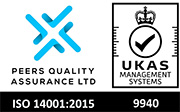SEO is one of the most viable and cost-effective ways to reach customers in key moments. From ranking in search engines to increasing exposure across social media channels, SEO remains crucial for brand visibility and paving the way for new business opportunities. According to research, 68% of online experiences begin with a search engine. That’s why SEO matters so much when designing a new website - each feature needs to be carefully crafted with search engines in mind.
When it comes to building purposeful and meaningful experiences that solve a problem and elicit an emotional response, SEO and design should work in tandem. Experience design is the process of creating seamless experiences for customers; it’s an interdisciplinary approach that requires an understanding of customer needs, technology, and user-centred products. However, top-performing websites incorporate both SEO and UX-focused web design practices. The experience of a website is all about providing users with the best possible value and ensuring they keep coming back. Read on to learn more about the power of web design and seo.
Create user-first content
One of the most important ways to maximise the performance of your brand with SEO and design is by producing user-first content. This is content that is highly relevant, useful, and engaging and provides a great on-page experience. Google’s helpful content update, released in 2022, was designed to reward websites that produce content specifically to help and inform people.
It’s now more important that businesses create content that informs, encompasses influential brand messaging and portrays a positive sentiment around the brand. By creating SEO-led content and incorporating design best practices, brands can maximise performance through the enablement of smooth and easy access at every stage of the buyer’s journey.
Quality user-first content also contributes to the overall design experience, as it helps customers understand different products and services. With user-first content, businesses deliver a strong digital presence, while at the same time creating visually appealing, search-friendly websites.
Information architecture
Information architecture is a crucial part of user experience design and SEO. It’s the process of structuring and organising information on websites to ensure optimal usability, and so that they can be easily found in search engines. When designing any digital product or website, it must be easy for users to quickly find and scan the information they’re looking for.
It’s about planning and organising the entire structure of a website and simplifying complex information for users. Information architecture covers the top navigation menu, sidebars, category pages, page structure, CTAs, and internal links. All of this enables customers to easily interact with your brand before completing a goal or progressing to a different stage down the funnel. In the organic journey toward conversion, information architecture and SEO complement each other perfectly, because the goal of both is discoverability. They pave the way for users to be able to navigate from search results to a page on the website that meets their needs in a structured way.
Site speed
The speed of your site is another critical factor of SEO. Certain design elements can slow a brand’s load time, resulting in a poor user experience and higher bounce rates. This can include large unoptimised images, flash content, plugins, and animation effects. Another factor that can slow down a website is if the design of a page allows consumption only after the content fully loads.
A fast-loading website encourages visitors to remain on your website, which will have a positive effect on your search rankings and can lead to higher conversions. Page speed is one of the most important components of any website and with the right design elements and optimisation, brands can maintain and improve performance.
Mobile friendliness
Streamlined experiences across devices are hugely important to a brand’s identity and engagement with customers. Having a mobile-friendly design directly contributes to the search performance of a website. This means establishing a mobile-friendly web design strategy, as well as a plan for continual optimisation, both of which will ensure a website is successful in the long run.
Having a responsive web design is the key to an enhanced user experience. From the images and texts to the calls to action, brands need to build a website that’s responsive across all devices. Considering that mobile accounts for approximately half of the web traffic worldwide, brands should focus on utilising SEO and web design practices for mobile searches. Brands need to offer the best presentation of their content for a user on a mobile device, focusing on structured data and an easily accessible user experience.
Get in touch with the TMWX team
At TMWX, we incorporate both digital design and SEO drive organic visibility and performance for our brands. Our expertise spans content, performance marketing, tech SEO and design, all of which embody an integrated vision. This enables us to craft bespoke experiences for our clients to attract and engage customers. It’s experiences that move people, underpinned by our Human Understanding Lab capabilities. When we create experiences for our clients, we always ensure each web platform is SEO-optimised and features compelling content that drives organic visibility. TMWX can maximise your brand’s performance.
To find out more about our SEO and design services, contact our Divisional Head of Marketing and New Business, Steve Garside.


